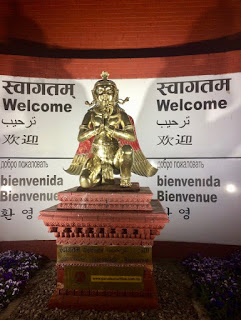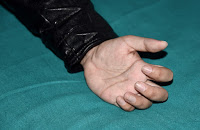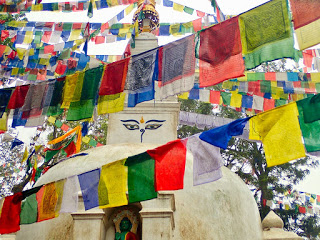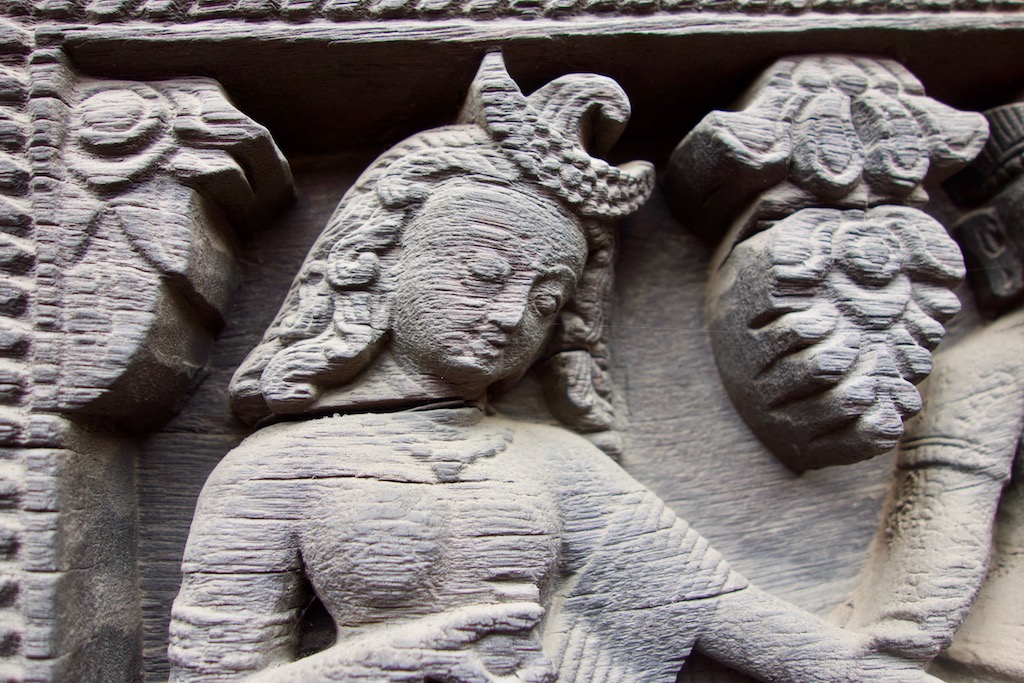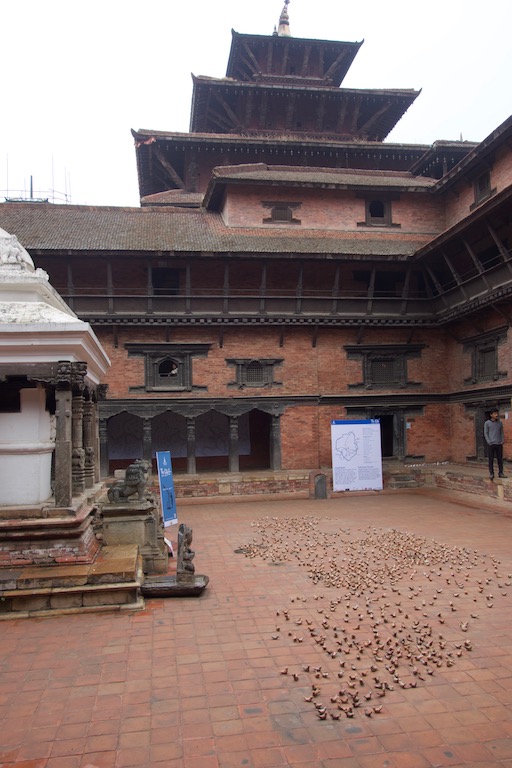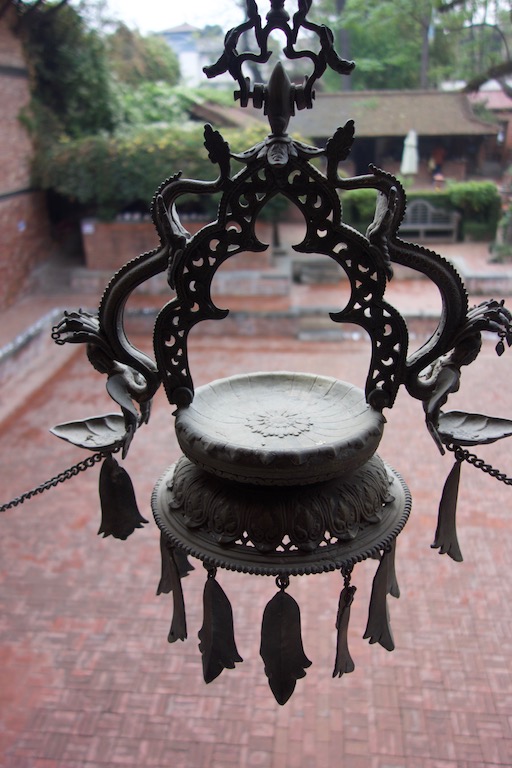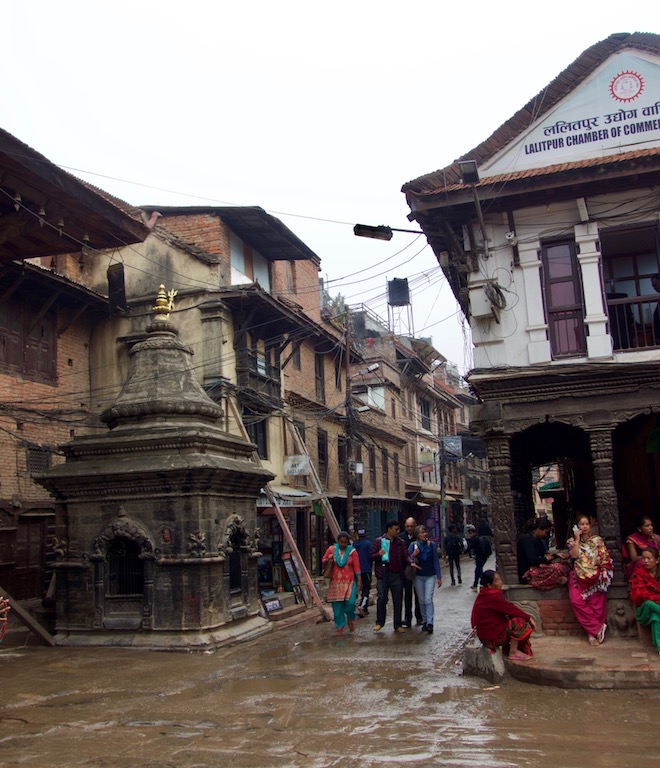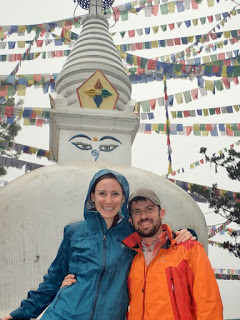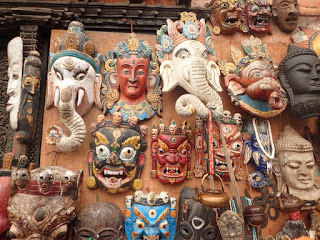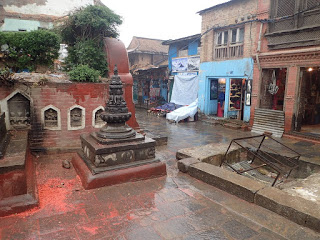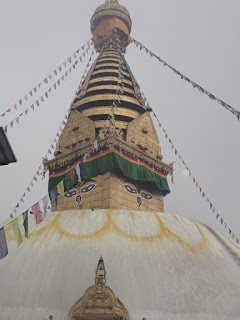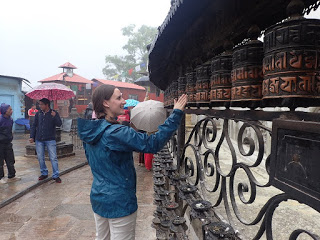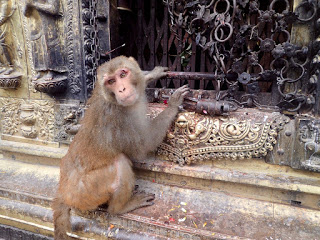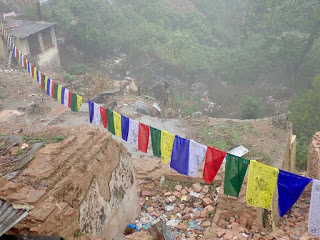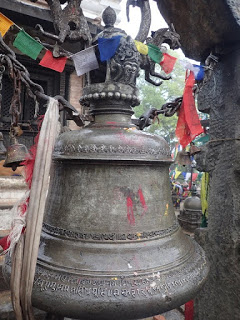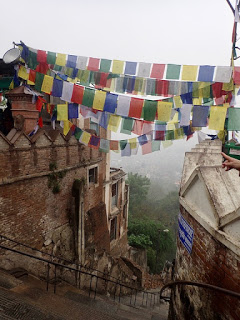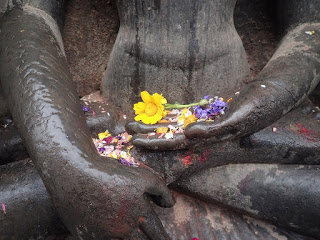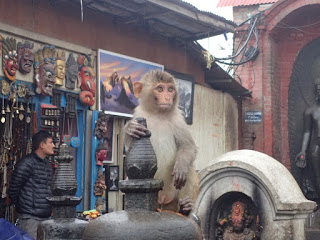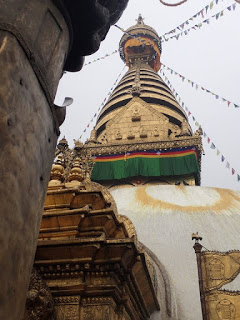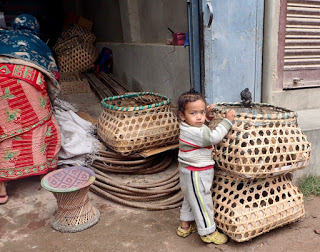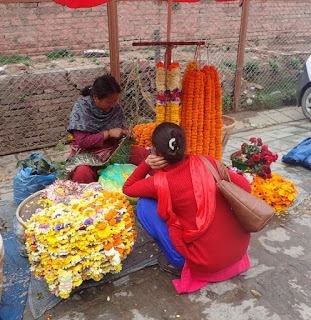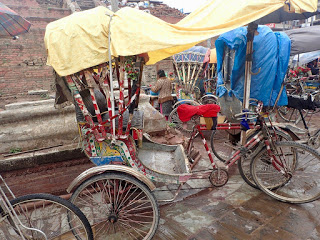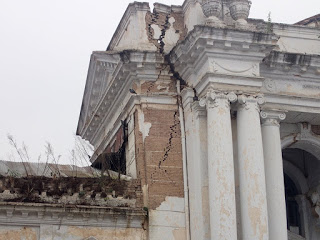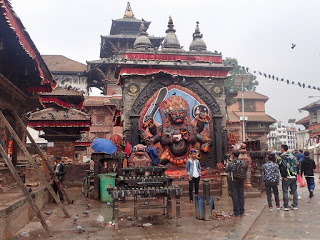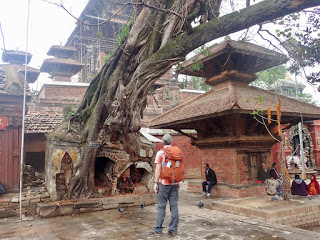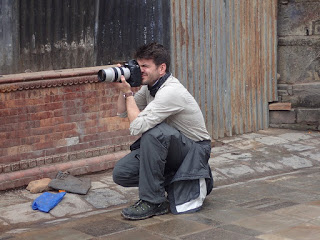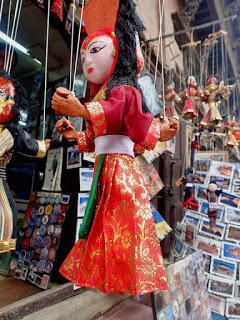Aim to Fly and Touch the Moon
Kathmandu, Nepal after 18 months, and still there are so many signs of the massive earthquake that rattled the country on April 25, 2015.
The
air quality remains poor: my throat feels raw and my eyes water. Our team wears filter
masks strapped to our faces, to protect our lungs. The city at night pulsates like a
living being: through the streets motorbikes, cars, rickshaws, trucks flow,
belching out waste, laced overhead by a gnarly grey network of telephone wires
and cables at each street corner.
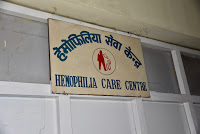 I’m here with the crew from Believe Ltd, who will be filming hemophilia B patient Chris Bombardier as he meets with the Save One Life program partner, the Nepal Hemophilia Society (NHS), and patients, and prepares for his Everest attempt. Chris’s wife Jessica accompanied him and will trek with us to base camp. She and I will stay two nights, then come back to Kathmandu while Chris stays another month, acclimating for the big climb. Should Chris summit, he will be the first person in history with hemophilia to conquer Everest. With
I’m here with the crew from Believe Ltd, who will be filming hemophilia B patient Chris Bombardier as he meets with the Save One Life program partner, the Nepal Hemophilia Society (NHS), and patients, and prepares for his Everest attempt. Chris’s wife Jessica accompanied him and will trek with us to base camp. She and I will stay two nights, then come back to Kathmandu while Chris stays another month, acclimating for the big climb. Should Chris summit, he will be the first person in history with hemophilia to conquer Everest. Withall the camera equipment, and Rob Bradford (photography), Jess, Chris and I in another, so Rob can
film. I enjoy their wide-eyed first look at Nepal with all its helter-skelter traffic
and humanity.
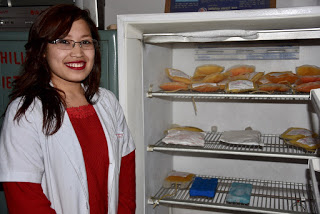 First stop today, Tuesday, March 28, is the Bir Hospital, where I’ve been three times
First stop today, Tuesday, March 28, is the Bir Hospital, where I’ve been three timespreviously. I first came to Nepal in 1999 for an assessment visit, then returned in 2000, when my company funded a medical conference. I was so impressed with the NHS then. And more so now. The NHS became our second program partner for Save One Life solely based on their ability to get the job done right, and fast. They are a crackerjack team and work hard to help their patients.
traveling with a film crew this time. I’m used to moving fast and ducking in and out. But
with about 200 pounds of camera and sound equipment, we have to move carefully
and cautiously. The hospital is still in disarray following the earthquake. It’s dark and uninviting. But the hemophilia treatment ward is brightly lit,
clean and orderly. No patients are there at first, and while the crew films,
we chat with the two lovely nurses.
A high number registered! About 200 make regular visits to the HTC, also a
high number. The center is now open 24 hours a day, which is excellent. They have a small
fridge, under lock and key, for factor. Inside is the Biogen/WFH donation of
Alprolix and Eloctate. This donation is absolutely revolutionizing care,
because it provides consistent product availability, which allows for planning, which leads to a
changed mindset. (I will write more about this in the August issue of PEN).
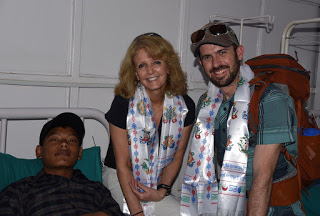 The nurses slipped silk scarves about our necks and greeted us with
The nurses slipped silk scarves about our necks and greeted us with“Namste!” as we each entered. The ward was upgraded! Freshly painted, with new
offices for factor storage and for the nurses’ office; it looks excellent. A freezer held
fresh-frozen plasma, something you never see in the US; this is for patients
with rarer factor deficiencies, or for when there is no factor.
Then a patient walked in: 18-year-old Bibek, a handsome, tall young man,
slender, with an apparent elbow bleed. Despite what must be searing pain, he
smiled broadly, was calm and accepting, gracious. It’s how the Nepalese are:
deeply ingrained in each seems to be a gentle approach to life, respect for
all, and profound civility. They have much to teach the world about how to get
along with others.
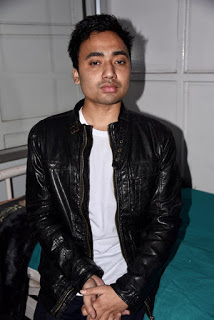 We chatted with him and learned he had to travel 3 hours to reach the
We chatted with him and learned he had to travel 3 hours to reach theHTC for one injection of 1,000 IU, not even enough for his lanky frame. And the
elbow bleed started the day before. He didn’t put ice on it because there is
none where he lives. Still he smiles; his face is placid and open, inviting.
His English is excellent.
hallway, then enter again, replay every conversation and act. We joke it’s
Bollywood and we should sing and dance our way in. Think the ending of Slumdog Millionaire! So we comply and redo the entire entry, greeting,
conversation. I ask them to include the photo of the mom who died in the
earthquake, while she was assisting in blood donations. She’s a true hero.
Ashrit. I regret that I didn’t recognize him at first. We chatted, and he
lifted his leather jacket sleeve to reveal a clawed hand: Volkman’s
contracture. Repeated bleeds for four years have left his left hand useless,
and in a permanent grasp. The saddest part is that he loves to play guitar. I
ask who his favorite guitar player is and he rattles off a long list: Jimmy
Page, Angus Young, Jimi Hendrix… “Slash?” I ask. Oh yes! He’s amazing! So we
share stories of guitar players and music, and he knows how to play Sweet Child
O’ Mine (one of my favorites). He even learned to play with one hand and had Jess and me listen to a
recording on his phone. It’s beautiful. He has talent. He also shows artwork, a
pencil sketch of a child, which is beautiful and haunting.
motorcycle? And I picked at his leather jacket. He started laughing, and I said
I know you Nepalese boys and your motorbikes! He said he used to but not any
longer. Such a sweetheart. He needs surgery. The
main problem? He has an inhibitor. Life has dealt this young man a double blow
but still he smiles and has dreams. I want to help him get surgery.
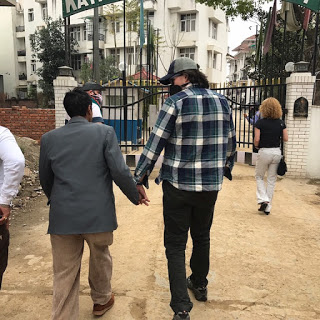 After
Afterthe Bir Hospital we drove to the Nepal Hemophilia Society office, in the
residential district. Some wiry teens were playing cricket in the street; birds
chirped, the sky was overcast and the air cool. Inside was crowded. They had
built out the office, including a new cold room, to store the donations from
Biogen; this means they could easily handle our proposed 4 million IU donation.
Manil Shrestha (also a patient) and his team are doing a great job. We asked questions, Believe Ltd. filmed… all good material for the documentary.
Mani suggests we go to “KFC,” which
we all think means Kentucky Fried Chicken. We scuffed across the dusty street,
to the main street, with cars, motorbikes and trucks bulleting past us. It’s
very dangerous to cross. Up the high curb (we have to help one another) and
into KFC: Kwik Food Café. I’ve eaten here before. The bathroom sported a squat
toilet, which is actually hard for patients with hemophilia to use–just think about it. Nepalese food is excellent and we down dumplings (called momo),
French fries, noodles, vegetables and Cokes. The talk is happy and light, and
everyone has a good time.
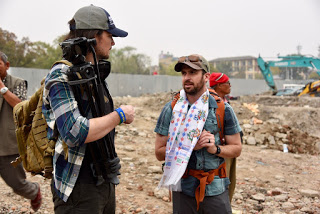 On the way back I witnessed a tender moment seeing Patrick
On the way back I witnessed a tender moment seeing Patrickchat with Beda Raj, a board member and also patient, and hold hands, which is the custom here among close male friends. Patrick is a rising star in our community: driven, ambitious, articulate, with a kind heart and compassionate soul. He
lost his 18-year-old brother Adam and it has impacted him greatly. Afterward,
we head for the Shanker hotel, and have dinner together at 7 pm. Everyone has Everest
beer and I have wine, and we share stories from the day.
March 29, 2017
It was rainy, which was disappointing, but then the air was remarkably cleaner
and easier to inhale. We start our day in the dining room together, and I enjoy
a breakfast of eggs, croissants, muselix (delicious), fresh watermelon and
mango, and steamy masala tea. Everyone is obsessed with their photos and we compare them.
Then off to Swayambhu, the “Monkey Temple,” close
by. We draw a crowd because of all the camera equipment. The focus is entirely on Chris; making a pilgrimage to this most famous of temples, in preparation for his climb. I feel very much at peace in Swayambhu. The colorful prayer flags
dance in the wind around the stupas with the painted eyes of Buddha watching. Stray
dogs, their tails eternally curly, strut about in the rain or sleep at the base
of the stupas or even inside the arch of the little temples to escape the rain. Bold macaque monkeys leap and swing overhead, fighting with one another, scanning
for food. They are a rough lot; some are missing patches of fur, and one is
actually missing a nose. One baby has a mangled leg he drags about. Birds chirp
and somewhere a cuckoo chimes.
level, where the gift shops are. The rain is pelting but I have an umbrella and
water-proof camera. I’ve been here twice before and so just enjoy it all. Other
trekkers are here, maybe German. I’m intrigued as always by the Hindu masks on
display. Jess and I meet up and I film her spinning the prayer wheels.
wouldn’t be? He didn’t set out to make a documentary, only to climb the Seven Summits
for a cause–Save One Life. Shy by nature, he comes across as
authentic, humble, and people will be drawn to that. So soft-spoken but a core of steel!
at the temple, and candles at another temple. A monkey bolts up, grabs an
offering of food meant for the gods, and scoots away. They are fast and mischievous. There’s still
earthquake damage, manifested in cracks in the buildings and piles of bricks which is so sad at this ancient of sites. The rain came and went, as we walked about. It took a while to get the tickets, and we stood on a street corner watching all the people walking by. Women with lined faces and colorful but damp saris tried hard to sell us trinkets: bracelets, necklaces, purses. “Good price I give you,” “Madame for you?”

